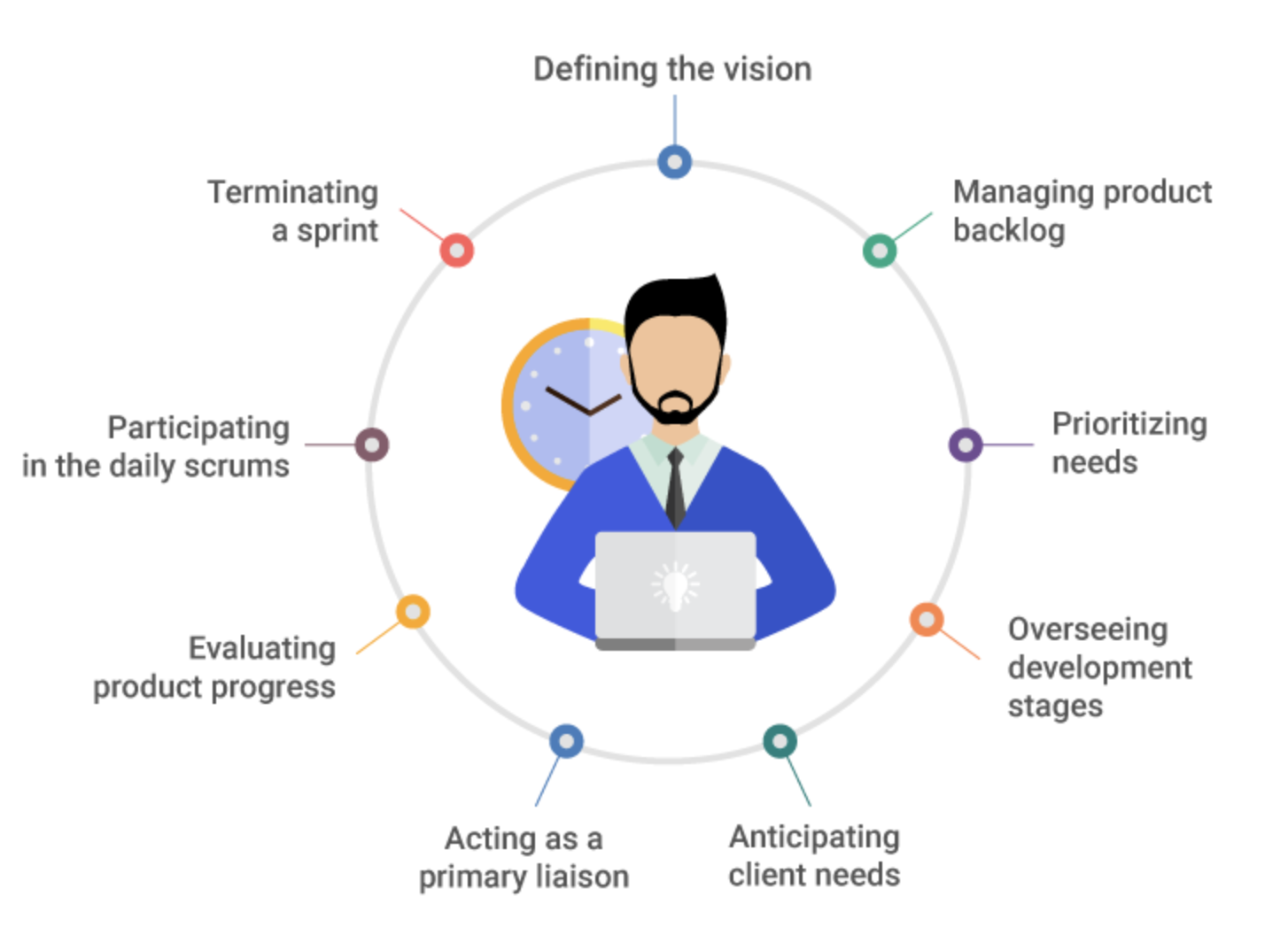The role of a Product Owner (PO) in a Scrum Team can often feel like trying to please a multitude of families. The board of directors has expectations of you, stakeholders look to you for guidance, and the development team relies heavily on your input. As a PO, you are the customer’s voice within the team. But what makes a truly excellent and effective Product Owner?

In the Agile Scrum framework, there are three core roles: the Product Owner, the Scrum Master, and the Development Team. A PO’s main responsibilities in Agile include managing the product backlog, deciding product features, and prioritizing them. However, the reality is that a PO’s duties extend far beyond these basics.
A good PO will clearly understand the company’s vision and strategy, thereby determining the goals and direction of the product. Because in each stage, the company’s orientation will change, so prioritizing product features and launching the product at the right time will help achieve growth goals and improve economic indicators. sales, product metrics, user attraction, and an advantage over competitors.
Secondly, a proficient PO must have solid industry knowledge (domain knowledge), understand the competition, and stay informed about new trends and technologies. For instance, if you are working on a banking product, it’s crucial not only to grasp banking operations but also to be aware of the current financial products on the market and their core systems. This knowledge will be the foundation for you to talk to the user community, understand how users are using the product as well as the problems they may encounter, communicate with stakeholders, domain experts, partnerships, public community , to help POs come up with appropriate directions and strategies for their products.

Thirdly, a PO should thoroughly understand their product from multiple dimensions. This includes knowing what makes your product stand out—its unique selling points, features, and operational processes. A good PO can articulate why their product differs from competitors, its advantages, and its operational workflow. Additionally, understanding your customers—where they come from, their expectations, how they interact with your product, and their behavioral data—is crucial. Finally, having a firm grasp of the financial metrics associated with the product, such as revenue, user base, acquisition costs, operational costs, and development costs, is essential.
Fourth, as a bridge between BOD, stakeholders and development team, PO equips himself with many soft skills, of which communication skills must be extremely good. You understand the product, understand the domain knowledge, understand the strategy, but how do you communicate this information to stakeholders and the development team so that they understand and act with you? What will you do when the developer asks what this feature is for? Why make new features when the backlog still has so many things? How will you explain to stakeholders that the feature you previously promised will have to be postponed for at least 1 month, and make room for another feature? Active listening, negotiation skills, persuading stakeholders, and open and frank communication with the development team are very challenging things that a good PO must have. Moreover, fostering relationships and building mutual trust between the technical product teams and stakeholders is vital.
Developing a product is not merely about coding features, testing, and releasing. For example, before releasing a new feature, you might need to present it to various company departments. Marketing teams need to understand the new features to craft effective product marketing strategies, sales teams require details to sell the product, operations teams must update operational procedures, and customer support needs to adjust their FAQs to address customer queries about the new features. The finance department also needs to be aware of potential cost increases and expected profits. Therefore, a good PO needs to understand the operations of the departments, so that the tech product and stakeholders can coordinate together, and create the feeling that the whole company is working together and contributing to the development of the product.
In conclusion, product development is a company-wide narrative. A great PO drives this narrative, ensuring that everyone contributes to the product’s success.
Author: Nguyễn Trí Linh